
Free shipping within the continental US over $50. Conditions apply
- Accelerometer Sensors (114)
- Fluid Sensors (1)
- Pressure Sensors (453)
- Acoustic Sensors (14)
- Gyro Sensors (11)
- Sensor Hardware & Accessories (58)
- Air Quality Sensors (40)
- Humidity / Dew Sensors (92)
- Specialized Sensors (50)
- Camera Modules (36)
- Image Sensors (96)
- Temperature Sensors (381)
- Chemical / Gas Sensors (38)
- Light / Color Sensors (96)
- Time of Flight (ToF) Sensors (50)
- Combo Sensors (70)
- Magnetic / Hall Effect Sensors (607)
- Touch / Proximity Sensors (167)
- Current Sensors (188)
- Motion / Occupancy Sensors (150)
- Ultrasonic Sensors (42)
- Flow Sensors (64)
- Position Sensors (348)
 https://www.futureelectronics.com/medias/sys_master/root/9109659516958/Sensors-v3-704x396.jpg
https://www.futureelectronics.com/medias/sys_master/root/9109659516958/Sensors-v3-704x396.jpgEnable Easy Measurement with Quality Sensors
The heart of a measurement system, sensors are devices that measure a physical quantity in order to convert it into an electronic signal. They respond to any change in physical phenomena or environmental variables and to the changes. Measure everything from light, sound, speed, temperature, pressure and more with the range of versatile sensors from top manufacturers available at Future Electronics. We stock Accelerometer, Angular Position Sensor, Gyro Sensor, Humidity Dew Sensor and other types to choose from.
Product Categories
-

Accelerometer Sensors
Measuring motion and movement made easy with the accelerometers available at Future Electronics. These acceleration sensors are suitable for measuring both static and dynamic forces. Our exclusive selection of analog and digital accelerometers can be used in wide range of applications, including industrial and automotive. Whether you want a single axis accelerometer for vibration testing or triaxial accelerometer for 3D positioning, find them all in our inventory of sensors from reputed manufacturers. -

Acoustic Sensors
Acoustic sensors are a major electronic component in devices involving sound calibration and measurement. Audio sensors detect and measure sound mechanically to produce electronic signals as output. Future Electronics offers a selection of digital microphones, acoustic wave sensors and more that find their use in telecommunications industry, commercial electronics, and more. Browse our collection to find the best fit for your design. -
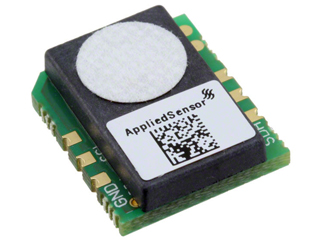
Air Quality Sensors
Monitor indoor air pollution and determine major types of pollutants with our line of air quality sensors. Whether you want to increase indoor air quality or get real-time data of the different types of air pollutants, our products have you covered. From optical dust sensors and particle sensors to multi-gas sensors, Future Electronics offers several types of air quality sensor for accommodating various needs. -

Camera Modules
-
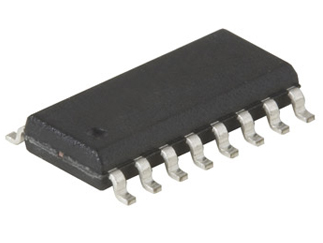
Chemical / Gas Sensors
When it comes to maintaining workstation safety, one cannot overlook the importance of reliable sensors. Future Electronics offers a whole range of chemical / gas sensors that ensure worker and equipment safety while preventing damage and injuries. We carry gas sensors, smoke detectors, gas gauge ICs and CO2 modules from popular brands. Use our parametric search filters to browse products by type, brand or package, so you can find what you need in a matter of minutes. -
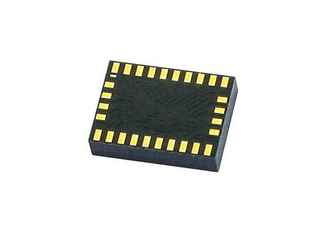
Combo Sensors
A combo sensor combines two or more sensors in a single unit, making for a versatile design in a small footprint. You can keep track of a number of parameters such as pressure, orientation, proximity and motion using the right type of combo sensor. Choose from humidity and pressure sensors, proximity and ambient light sensors, accelerometer and gyroscope sensors, and other combinations based on your requirement. Find all these and more only at Future Electronics where reliable products and competitive prices meet. -

Current Sensors
Current sensors are devices that detect AC and/or DC current levels in a circuit and convert them to yield an output voltage, which is directly proportional to the current in the designed path. They are widely used in electronic systems and other applications that require precise sensing of variable current flow. Future Electronics brings you an exclusive selection of current sensors from top manufacturers. Our portfolio includes hall current sensor IC, hall-effect latch/switch, and more. -

Flow Sensors
Flow sensors are devices that enable smooth measurement of the flow rate or quantity of a gas or liquid moving through a pipeline. They are critical components in industrial applications that require precise calculation of gas/liquid quantity. Future Electronics has an exclusive selection of cost-effective flow sensors. Our selection includes digital air gas flow meters and bi-directional flow sensors. We have categorized flow sensors by flow range, accuracy, output type and more for easy selection. -

Fluid Sensors
-
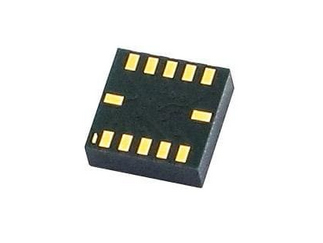
Gyro Sensors
Gyro sensors, also known as angular rate sensors, are devices that sense angular velocity, and help to control and maintain the position, level or orientation of any system. Future Electronics is the right place to find gyro sensors from leading manufacturers. They are reliable, cost-effective, and can be used as a MEMS gyro sensor or a triaxial gyroscope, among other applications. For easy and simple reading, we offer digital output gyroscopes. -
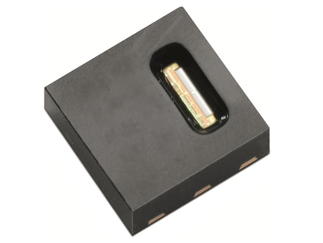
Humidity / Dew Sensors
Humidity sensors, also known as hygrometers, are devices that not only sense, but also measure and report the relative humidity in the air. Future Electronics is the right place to find humidity/dew sensors categorized by accuracy, operating temperature range, humidity range, supply voltage, and supply current. Whether your design needs a dew-point sensor, digital humidity monitor, humidity and temperature sensor, moisture sensor, or wireless humidity sensor, we offer the right solution. -
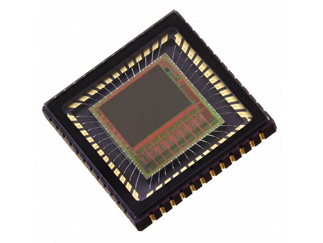
Image Sensors
Widely used in cameras and other imaging applications, image sensors are solid-state devices that convert an optical image into electronic signals. Whether you need a CMOS image sensor, CCD image sensor, or camera image sensor, Future Electronics is the right place for you. Take your pick from our image sensors categorized by supply voltage, and supply current using the parametric search. -
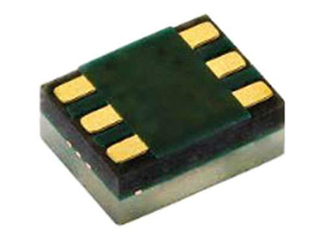
Light / Color Sensors
Light sensors are devices that are used to detect the intensity of light. Light sensors are of many types. Photo diodes convert light into voltage, photo resistors change resistance value based on the light intensity and photo multipliers detect and multiply light. If you need a motion light sensor, ambient light sensor, or automatic light sensor, Future Electronic has an exclusive chip selection to integrate to any light sensor IC. Based on the output type, choose from our voltage, analog, or digital light sensors. -

Magnetic / Hall Effect Sensors
Hall Effect sensors are transducers that react to magnetic field to vary their output voltage. These magnetic sensors are used for magnetic and position sensing in industrial, automotive and consumer electronics applications. Future Electronics is the right destination if you are looking for magnetic/hall effect sensors. We stock hall effect latch, switch, cam sensor and many other types from reputed manufacturers. -
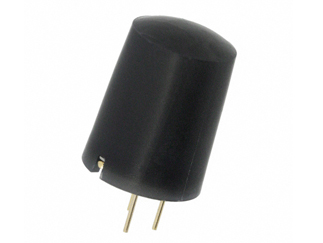
Motion / Occupancy Sensors
Motion sensors are electronic devices that detect motion. They are suitable for use in security systems. Occupancy sensors effectively detect occupancy of space by people in a room and automatically adjust the lighting or temperature accordingly. Future Electronics stock an exclusive selection of motion detection sensors and occupancy sensors from top manufacturers. Choose from our motion sensor chip collection that can be used as infrared motion sensor, solar motion sensor, remote motion sensor or wireless motion sensor. -
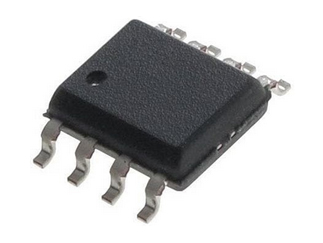
Position Sensors
Position sensors are devices that enable position measurement of target objects to monitor whether they are within specified positions and tolerances in applications. They are used in automation, aerospace, industrial and many other applications. Future Electronics offers robust and dependable position sensor ICs for every application. Choose from our angular position sensor, linear position sensor or rotary position sensor available from well-known manufacturers. -

Pressure Sensors
Our range of barometric pressure sensors delivers high precision and excellent cost efficiency. If keeping track of atmospheric pressure is a key aspect in your project, do it with reliable sensors from Future Electronics. Barometric pressure sensors are ideal for use with weather monitoring devices and to measure precise output from other sensors that are sensitive to pressure fluctuations. We stock differential pressure sensors, absolute pressure sensors and more. -

Sensor Hardware & Accessories
Integrating a sensor to your design made easy with the wide range of sensor hardware and accessories available at Future Electronics. From filters and switches to demo boards and evaluation kits, we stock all types of sensor fixings from well-known manufacturers. Our range of sensor installation hardware is categorized by diameter, length, material and packaging to help you select the compatible accessories in no time. -
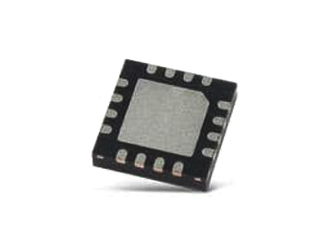
Specialized Sensors
Future Electronics brings you a broad selection of specialized sensors and sensor controls to measure, monitor, and report everything from temperature and optics to vibration and lighting in an application. Our selection includes integrated optical sensors, analog and digital temperature sensors, and vibration sensors. For safety applications, we offer earth leakage sensors and for automotive applications, we have ambient temp sensors. To ensure robust performance, we stock specialized sensors from leading manufacturers. -

Temperature Sensors
Temperature sensors monitors temperature and records any changes through electrical signals. They are widely used in home appliances such as freezers, refrigerators, air conditioners and water heaters as well as in commercial applications such as aircrafts to determine atmospheric icing conditions, and weather forecast equipment. At Future Electronics, you’ll find a huge array of linear active thermistors, precision temperature sensor ICs and more in digital and analog output. -

Time of Flight (ToF) Sensors
-

Touch / Proximity Sensors
Touch and proximity sensors find their use in various applications like mobile phones, parking systems, conveyor systems, paper machines and more. They detect and record nearby objects without physical contact. Find a whole array of inductive, capacitive, magnetic and photoelectric touch sensors at Future Electronics. Whether you want to measure output in analog or digital formats or by voltage, we have you covered. Shop now! -

Ultrasonic Sensors
Featured Products
More Information on Sensors...
What is a Sensor?
An electronic sensor is a device that measures a physical quantity in order to convert it into an electronic signal that can be read by an electronic instrument or by an observer. A sensor receives and responds to a signal when touched. Ideally, sensors are designed in order to be linear to a simple mathematical function of the measurement. The output signal is linearly proportional to the value or a simple function of the measured property. The sensitivity is then defined as the ratio between the measured property and the output signal. Sensitivity indicates how much the output of the sensor changes when the measured quantity changes.
Types of Sensors
There are several different kinds of sensors at Future Electronics. We stock many of the most common types categorized by several parameters including supply voltage, supply current, output type, output current, operating temperature range, accuracy, sensing range, packaging type and several other attributes specific to each type of sensor. Our parametric filters will allow you to refine your search results according to the required specifications.
Sensors from Future Electronics
Future Electronics has a wide range of sensors from several manufacturers. Once you decide if you need an Accelerometer, Air Quality and CO2 Sensor, Angular Position Sensor, Biosensor, Gyroscope Sensor, Environmental sensor, Humidity / Dew Sensor, Image Sensor, Light Sensor, Inertial sensor, Light and Color sensor, Linear Position Sensor, Magnetic / Hall Effect Sensor, Motion and Occupancy Sensor, Position and Speed sensor, Pressure Sensor, Proximity Sensor or Temperature Sensor, you will be able to choose from their technical attributes and your search results will be narrowed to match your specific sensor application needs.
We deal with several manufacturers such as ams, Bosch Sensortech, Integrated Device Technology (IDT), ON Semiconductor, TE Connectivity (Measurement Specialties), Melexis, Microchip, NXP and STMicroelectronics, among others. You can easily refine your sensor product search results by clicking your preferred sensor brand from the list of manufacturers below.
Applications for Sensors:
Accelerometers can be used in order to measure vehicle acceleration and vibration in vehicles, process control systems, machines, buildings and safety installations.
Motion sensors can be found connected to a burglar alarm used in order to alert the security company or home owner after a motion is detected. They can also be used to trigger a red light camera.
The main applications for gyro sensors are angular velocity sensing, angle sensing and control mechanisms to sense the vibrations produced by external factors.
Proximity sensors have a wide range of applications including parking assistance, conveyor systems, vibration measurements, roller coasters, anti-aircraft warfare, mobile phones and touch screens on mobile devices.
Applications for pressure sensors include aircraft, automobiles, weather instrumentation and any other machinery that has pressure functionality implemented. Other applications for pressure sensors include measuring flow and to calculate the level of a fluid or a loss of pressure due to a system leak.
Measurement applications for linear position sensors include coordinate-measuring machines, gear measurement tension testers, laser scanners and callipers, pick-and-place PCB assembly equipment, robotics, machine tools, wire bonders, printers and digital presses.
Hall Effect sensors are often seen in industrial applications and in consumer equipment. They can also be found in various types of sensors such as rotating speed sensors, current sensors, pressure sensors and fluid flow sensors.
Devices that include light sensors have several uses in scientific applications and in everyday consumer products. A light sensor may be part of a safety or security device like a garage door opener or a burglary alarm. Several modern electronics, including TV’s, computers and wireless phones use ambient light sensors in order to automatically control the brightness of a screen in situations where light intensity is high or low.
Image sensors are mostly used in camera modules, digital cameras and other imaging devices. Applications in the dental x-ray field include intra-oral, panoramic and cephalometric imaging.
Humidity sensors are found as part of home HVAC systems. They can also be found in offices, cars, humidors, museums, industrial spaces and greenhouses and can be used in meteorology stations to report and predict weather. Dew sensors are used in the coating industry because the application of paint may be extremely sensitive to dew point.
Angular position sensors can be found in a wide array of automotive applications including steering wheel, pedal, motor-shaft, throttle, torque, power seat and power mirror position sensing. They can also be used in industrial applications such as valve position sensing, in flow meters and in robotics.
Temperature sensors are widely used in engineering and scientific applications, especially measurement systems. They are found within roadways in cold weather climates in order to help determine if icing conditions exist. Indoors, temperature sensors are used in several climate control systems including refrigerators, freezers, air conditioners and water heaters.
Choosing the Right Sensor:
With the FutureElectronics.com parametric search, when looking for the right sensors, you can filter the results by category. We carry the following categories of sensors: Accelerometer, Air Quality and CO2 Sensor, Angular Position Sensor, Biosensor, Gyroscope Sensor, Environmental sensor, Humidity / Dew Sensor, Image Sensor, Light Sensor, Inertial sensor, Light and Color sensor, Linear Position Sensor, Magnetic / Hall Effect Sensor, Motion and Occupancy Sensor, Position and Speed sensor, Pressure Sensor, Proximity Sensor or Temperature Sensor.
Once you choose the sensor category, you can narrow them down by various attributes: by supply current, supply voltage, output current, output type, accuracy, operating temperature range and sensing range, to name a few. You will be able to find the right Accelerometer, Angular Position, Gyro, Humidity / Dew, Image, Light, Linear Position, Magnetic / Hall Effect, Motion, Pressure, Proximity or Temperature sensor by using these filters.
Sensors in Production Ready Packaging or R&D Quantities
If the quantity of sensors you require is less than a full reel, we offer to our customers several of our sensors in tray, tube or individual quantities that will help you avoid unneeded surplus.
Future Electronics also offers its clients a unique bonded inventory program designed to eliminate potential problems that may arise from an unpredictable supply of products that could contain raw metals and products with erratic or long lead times. Talk with your nearest Future Electronics branch and find out more on how you and your company can avoid possible shortages.




























